What Ferments?
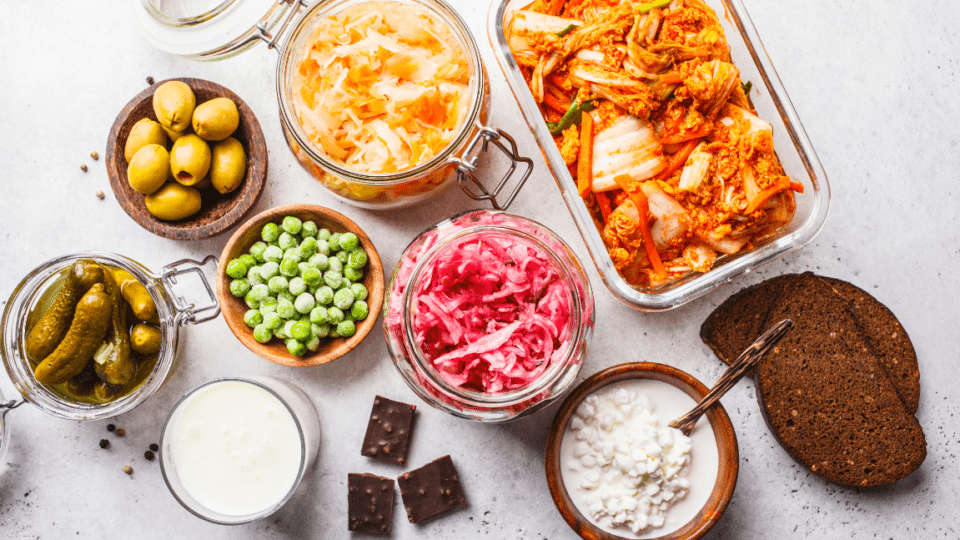
What is fermentation?
I’m going to keep it simple for you. Fermentation is when microorganisms “eat” sugars and produce byproducts. (Nerdy definition below.) These microorganisms could be yeast, bacteria, mold, or other fungi. Sometimes we like the byproducts, and sometimes we don’t. Let’s dig in. 🤤
Brief history of fermentation
JK, history lesson first. Then we can eat.
Most experts believe intentional fermentation originated after humans observed and consumed rotting fruit. The alcohol produced gave “favorable” results and it is likely that humans sought to recreate the process to produce more. The earliest evidence so far (we’re always looking!) is from alcohol production in ancient China, around 7000-6600 BCE.
Everyone knows about the Egyptian’s, Greek’s, and Roman’s love of bread, beer, and wine, but they also enjoyed many cheeses and fermented vegetables. During the Middle Ages and Renaissance, monks and alchemists refined fermentation techniques, but it wasn’t until the Industrial Revolution that the role of microorganisms was discovered by Louis Pasteur. Since then, fermentation has become an industrial process producing foods, beverages, antibiotics, and more.
Which brings us back to our question:
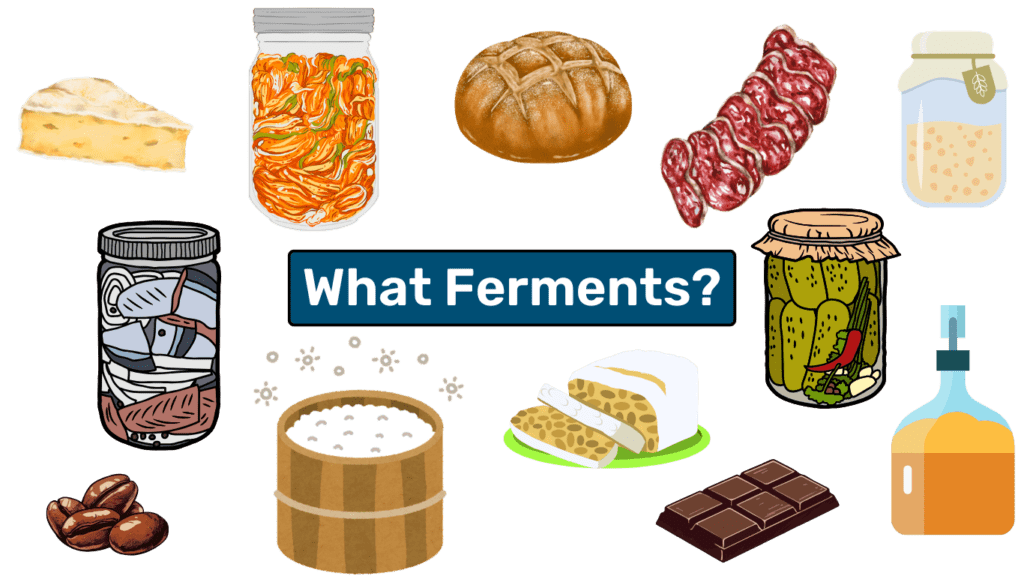
Fruits
Like children, microorganisms LOVE fruit. Talk about a sugar high.
Grapes
I don’t know about you, but alcoholic beverages are always at the top of my mind when thinking about fermentation (shocking, I know) and you can’t have wine without grapes. Wine is one of the oldest and most widely consumed alcoholic beverages in the world.

Apples
Cider is made from fermented apple juice and is particularly popular in regions with abundant apple orchards, such as parts of Europe and North America. It can range from sweet to dry and is often enjoyed as a refreshing alternative to beer or wine.
(Apple wine = higher ABV. Apple cider = lower ABV.)
A note on fruit wines
Fruit wine can be made out of almost any fruit. The only qualifier here is that the alcohol content is similar to that of grape wine.
Pears
The USA is really missing out on a great market here. Perry (pear cider) is delicious and has a lighter fruitiness than cider while also having higher tannins.
Cocoa beans
Yup, that cocoa. Chocolate is made from the beans inside a cocoa pod that grows on a cacao tree. The beans are harvested, fermented, dried, roasted, and ground to make cocoa powder which can become chocolate.
FUN FACT: Cocoa beans are often fermented by the wild yeast and bacteria naturally present in the environment rather than inoculated.
Coffee beans
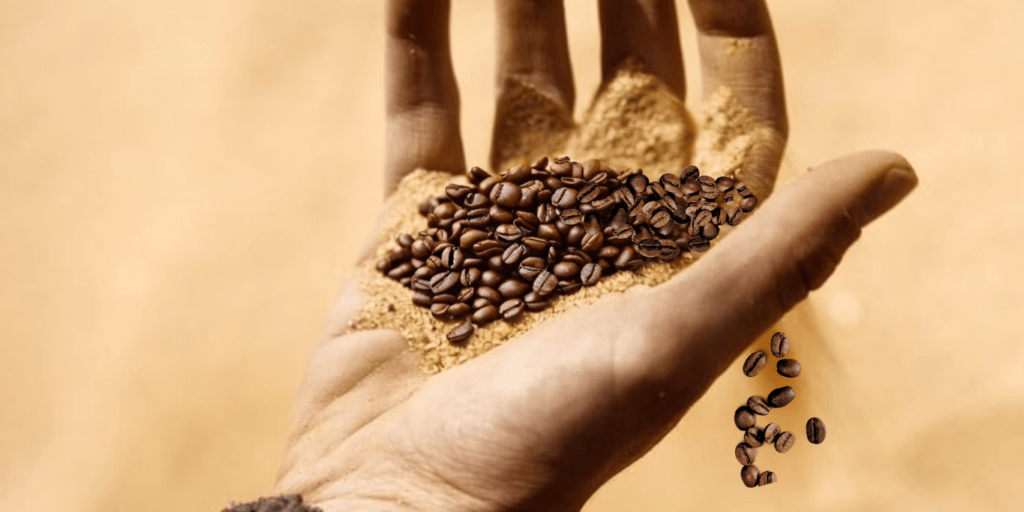
He who controls the [coffee] controls the universe!
Coffee beans come from a berry and are fermented in water for varying lengths of time (hours to days). This fermentation step enhances the flavor profiles and complexity of the final cup.
The [coffee] extends life. The [coffee] expands consciousness. The [coffee] is vital to space travel [research and development].
Olives
Raw olives are inedibly bitter and require processing before consumption. (You’ll never guess what has to happen…) The raw olives are soaked in brine or dry cured for weeks to months, allowing lactic acid bacteria to ferment the sugars. Per usual, this process effects the final flavors and textures of this Italian delicacy.
Vanilla beans
Second in price only to saffron, vanilla is one of the most loved flavor profiles. Harvesting, fermenting, and processing is very labor intensive so it is a good thing a little bit goes a long way!
Vegetables
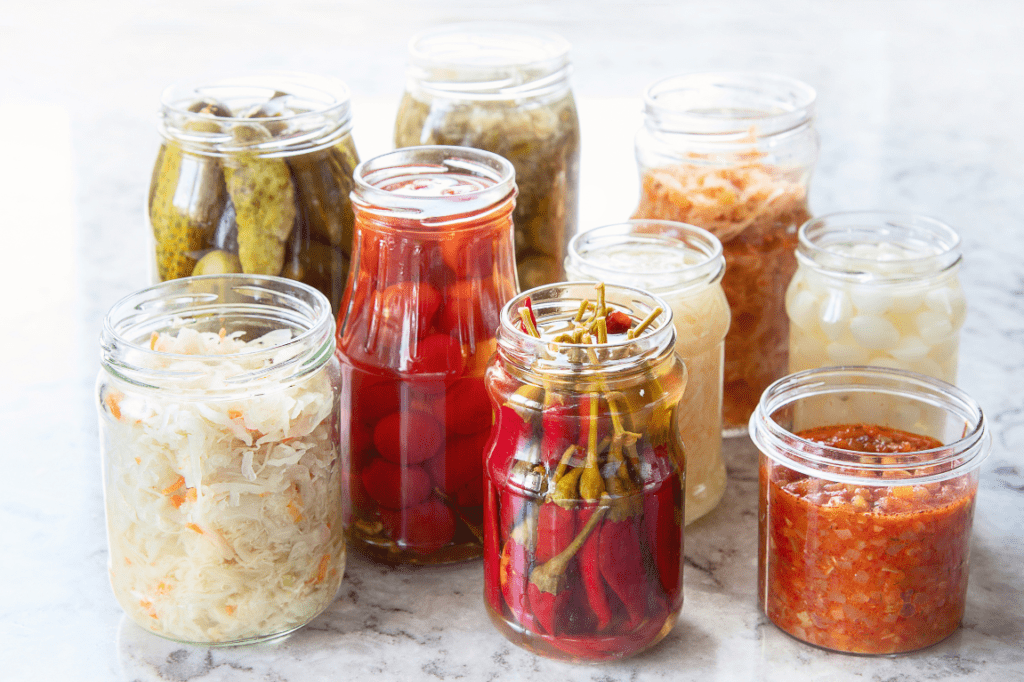
Peppers
There are many ways to make hot sauce but did you know that some of them are fermented? Popular brands like Tabasco and Sriracha both use fermented chili peppers (and other ingredients) to create deeper, more complex flavor profiles than their unfermented counterparts.
Cabbage
Sauerkraut and Kimchi
Traditionally, vegetables were fermented as a method of preserving them and many cultures seem to have their own version of fermented cabbage. Most well known are sauerkraut (Germany/Central and Eastern Europe) and kimchi (Korea). Sauerkraut, served as a side dish, is typically only cabbage, salt, and maybe caraway seeds. Kimchi, used as a main, side, or ingredient, is cabbage fermented with a mix of spices and occasionally other vegetables.
Soybeans
Another extremely versatile vegetable, soybeans can be turned into a slew of foods and ingredients. Here are a few well known examples:

Tempeh
Mold-fermented, cooked soybeans. (Sounds so appealing, doesn’t it?) Microbes well beyond bakers’ yeast can ferment foods, and Rhizopus oligosporus is one of them. After cooking, the soybeans are mixed with the mold culture which will bind the soybeans together over the 24-48 fermentation period creating a dense cake that is ready to be cut and cooked.
Miso
More moldy, cooked soybeans! This time, the soybeans are pureed and then mixed with rice or other grain-base inoculated with koji mold (Aspergillus oryzae). Proportions of soybeans to grain, fermentation time, and fermentation temperature all contribute to the miso paste’s final color and flavors.
Soy sauce
Have you ever seen a ‘Gluten Free’ label on soy sauce and thought, “Well, duh.” No? Oh. Well, I had no idea there was wheat in soy sauce, but there is.
All the veggies
Let’s be real. All veggies are fair game – except the poisonous ones.
(I dare you to ferment broccoli. Ew.)

Grains
Wheat, Barley, Rye, Corn, Oats, Millet, etc.
Grains are very versatile and are often interchangeable or used as a blend. Note: Rice should also be in this category but is highlighted below for its unique beverage.
Bread
Most fermented breads fall into two categories: wild yeast or commercial yeast. Wild yeast, in partnership with lactic acid bacteria, create tangy, complex, crusty, glutenous, glorious breads. Commercial yeast create grocery store bread. Yeah, it has its place, but you will not sway me from my biases.

Beer
In golden hues, thy frothy head does rise,
A brew of mirth, a liquid feast for eager eyes.
– ChatGPT, An Ode to Beer
I agree, ChatGPT. I agree.

FUN FACT: Beer and wine use the same species of yeast, Saccharomyces cerevisiae, but different strains. Each strain has its own fermentation capabilities and environmental preferences – such as temperature or alcohol tolerance. (And, yes, beer nerds, there is also S. pastorianus.)
Distilled spirits
Let’s be clear, anything that produces alcohol can become a distilled spirit. However, for this list we are keeping it under grains because the majority of distilled spirits come from cereals. To name a few: whisky, whiskey, rye whiskey, Irish whiskey, Canadian whiskey, Scotch, bourbon, Kentucky bourbon…
Also, vodka, gin, and moonshine.
Rice
Rice was singled out for its lone, non-replaceable role in making sake.
Our beloved mold, koji (also see miso), is back with a new, delectable, fermented beverage: sake.
Rice + koji + yeast = magic
Dating back over two millennia, this Japanese alcoholic drink is now enjoyed worldwide.
Dairy
Yogurt
Remember GoGurt? A) apparently you can still buy it. B) did you know the Canadians called it Yoplait Tubes and the British and Irish called it Frubes? “Mom, can I have a Frube?”
Cheese
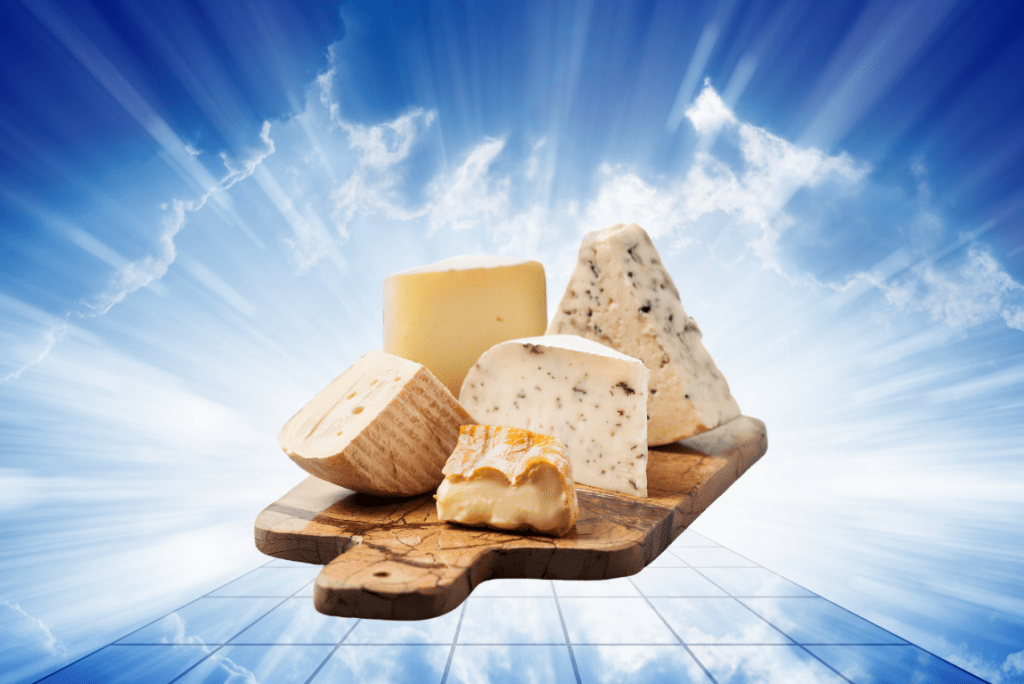
Enough said.
Kefir
Kefir grains are a cauliflower-like looking SCOBY that are used to ferment milk. Like your co-worker’s sourdough starter that they keep trying to give you so you too can have the most amazing homemade bread, Kefir grains are shared among friends and family. Each person’s kefir grains will impart a unique flavor based on their SCOBY’s composition.

Meat
Yes, ‘fermented meat’ sounds weird but bear with me. You’ve been eating and loving fermented meat your whole life (unless you are weird, a vegetarian, or have alpha-gal – in which case, my sincerest condolences).
Sausages
Popular examples of fermented sausages include pepperoni, salami, and chorizo. (Hello, pizza toppings!) Fermented meat is also considered a type of cured product and is a way of preserving the meat long-term.
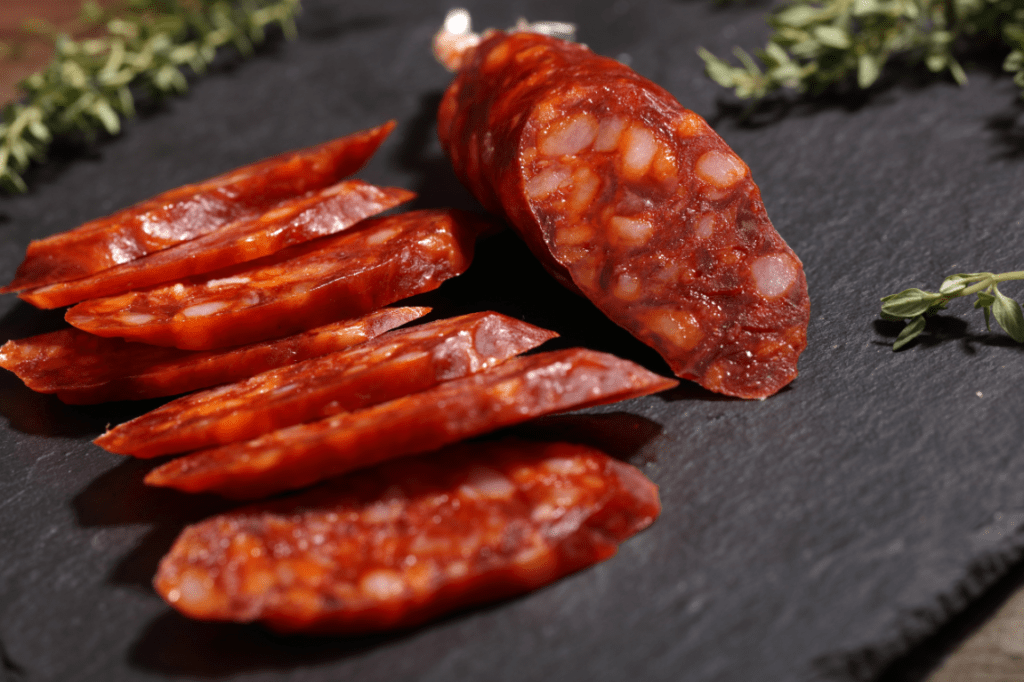
Fish sauce
On its own, it is very polarizing, but when incorporated into a sauce or dish, it adds an amazing umami richness. Typically made of fermented anchovies.
Other
Honey
We know: yeast + sugar = alcohol
With honey being (nearly) pure sugar, it makes a great base for mead production. In case you have never had mead before, remember that fermentation uses up the sugar so most meads aren’t as sweet as you’d think.
Tea

Need a tart, refreshing drink? Kombucha is your lady! Because each SCOBY has a different composition of microbes, some will be tarter than others. Keep trying them until you find the right level for you.
Alcohol
I have another equation for you:
alcohol + SCOBY = vinegar!
Did you know, the US FDA requires vinegar to contain at least 4% acetic acid but many are in the 8+% range? Yum.
What shouldn’t be fermented?
Mountain Dew
We really don’t think this should exist, but @goldenhivemead took the leap for the rest of us and proved that Mountain Dew can be turned into wine. If anyone makes this and wants to send us a sample, we will consider moving it out of the ‘shouldn’t be fermented’ category.
Poisons
Only organic material can be fermented, but sometimes it is better to skip a certain food item due to toxins that should be avoided. Some examples are:
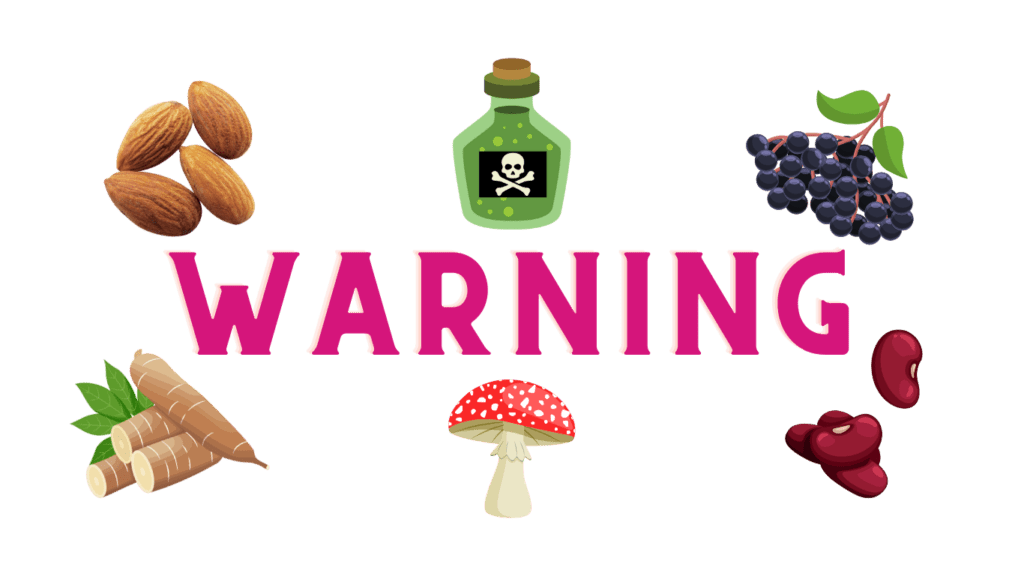
- Cassava: Cassava contains cyanogenic glycosides, which can release cyanide when metabolized (for example, by microbes).
- Certain types of beans: kidney beans, for example, contain lectins and phytohaemagglutinin, which can cause malnutrition, intestinal damage, and/or poisoning. (Cooking kidney beans deactivates the toxins.)
- Bitter almonds: contain amygdalin which can release cyanide when metabolized.
- Elderberries: contain cyanogenic glycosides and alkaloids, which can be toxic if consumed raw.
- Certain wild mushrooms: many contain toxins that can cause illness or death. Fermentation doesn’t change that. Don’t do it.
During fermentation, the activity of beneficial microorganisms can break down or degrade toxic compounds like cyanogenic glycosides, lectins, or other anti-nutrients, rendering them harmless or reducing their levels to safe amounts. However, it is essential to follow proper fermentation techniques and guidelines to ensure safety. This may include steps such as thorough washing, soaking, or cooking before fermentation, as well as monitoring fermentation conditions such as temperature, pH, and fermentation time.
Even with fermentation, it’s crucial to exercise caution and follow recommended procedures to minimize the risk of consuming toxic substances.
Terminology
Acetic acid: the main component of vinegar, contributing to its sour taste and distinctive aroma. Acetic acid is produced through the fermentation of ethanol by acetic acid bacteria. It is also commonly used as a preservative.
Fermentation: “The enzyme-catalyzed anaerobic breakdown of an energy-rich compound (such as a carbohydrate to carbon dioxide and alcohol or to an organic acid) by the action of microorganisms (such as bacteria or yeast) that occurs naturally and is commonly used in the production of various products (such as food, alcoholic beverages, and pharmaceuticals) especially by controlling microbial enzymatic activity.”
“Fermentation.” Merriam-Webster.com Dictionary, Merriam-Webster, https://www.merriam-webster.com/dictionary/fermentation. Accessed 20 Jun. 2024.
Koji: a type of mold, specifically Aspergillus oryzae, which is typically inoculated onto a substrate, such as steamed rice, where they break down starches and proteins into simpler sugars and amino acids. Koji plays a significant role in the production of sake, soy sauce, and miso.
Lactic Acid Bacteria: a type of bacteria that is capable of metabolizing carbohydrates into lactic acid. They are commonly used for yogurt, cheese, sauerkraut, kimchi, and sourdough bread.
SCOBY: Symbiotic Culture Of Bacteria and Yeast. A culture of various strains of yeast and bacteria that are used to ferment carbohydrates. Commonly found in kombucha, vinegar, and kefir.
Yeast: a single-cell fungus capable of fermenting sugars into ethanol and carbon dioxide. They play a key role in bread and alcohol production.
